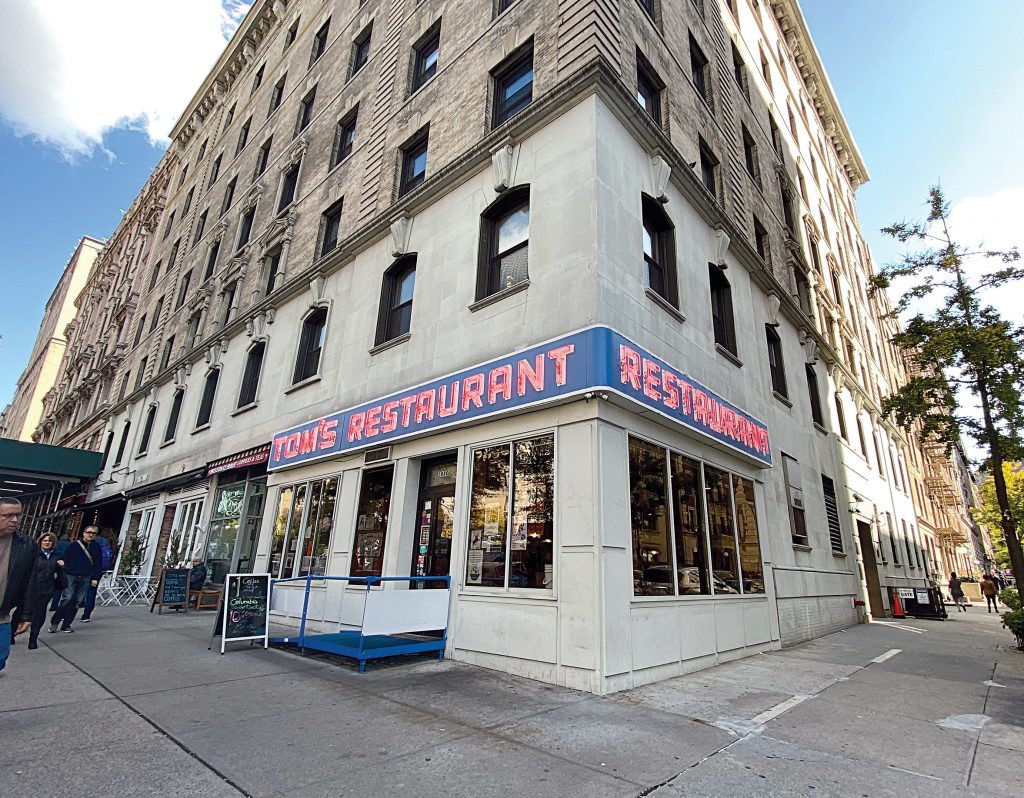For the Love of Diners
Posted by estiator at 14 December, at 15 : 13 PM Print
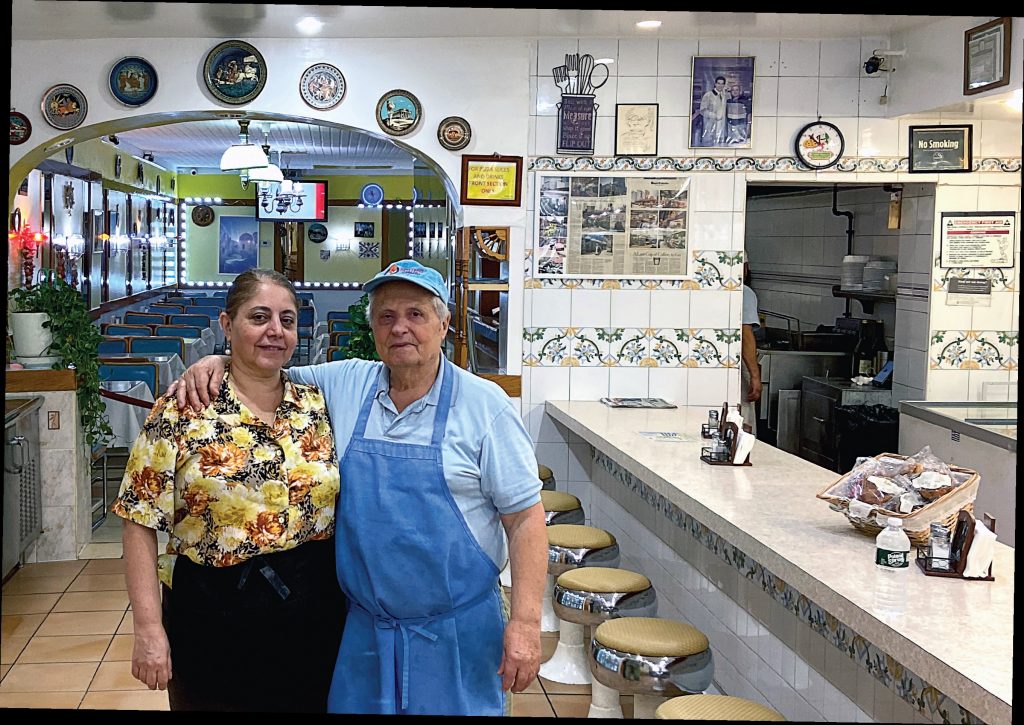
Classic New York City eateries preserve a fragment of American culture.
By Maria Benardis
Growing up in Australia, I watched many American television shows (such as Seinfeld and Happy Days) where diners were featured prominently. Their portrayal in American pop culture conjured images of a happy place where visitors could experience comfort food and good old-fashioned hospitality; something you would expect from Grandma. I longed to visit the U.S. just to experience what I considered to be the all-American dining experience.
According to many sources, the first diner concept opened in 1872 in Providence, Rhode Island. It was a “night lunch wagon” to serve those who worked and played long after the restaurants shut at 8 pm. The American Diner Museum notes that “men started selling sandwiches out of horse-drawn carriages, and pretty quickly, companies were manufacturing made-for-purpose modified carriages with counters and stools, so customers could eat inside.” By the 1920s, it says, the horse-drawn cart gave way to the railway car, “and the modern-day diner was born.”
The diner as we know it today is an icon of American culture, with New Jersey owning the distinction of Diner Capital of the World. The American diner is a home away from home for many of its customers. These are places where people meet their neighbors over a square good meal. For many, the Greekowned diner is a place they remember going to as children and where they now bring their grandchildren. They were often open 24 hours, and they served comfort food and staples of American cuisine— hamburgers, fries, milk shakes, sandwiches, pies, and other simple, quickly cooked, inexpensive, cheerful fare.
Mention the word “diner” and most people immediately think of Greeks. Greek immigrants showed a strong affinity with the restaurant business from the beginning of the 20th century when they began coming to the U.S. in large numbers. They opened coffeehouses (the “kaffenion”) where patrons could enjoy each other’s company. Since the 1940s, most diners in New York City have been owned by people of Greek descent as the kaffenion transitioned to the modern Greek diner.
Nowadays, the diner seems to be thriving in areas such as New Jersey while in large cities, like New York, where rents have been skyrocketing, they have been slowly disappearing. A 2015 Crain’s article reported that diners had seen a 60 percent decline over the last quarter decade, due primarily to rising rents as well as “discerning millennial palates vetoing greasyspoon fare.”
In New York City, Hell’s Kitchen is a hub of Greekowned diners. When I moved here from Sydney, Australia, I decided to live in Hell’s Kitchen for two reasons: first, because of the word “kitchen” in the name, and second, because of the number of Greek diners and Greekbased businesses in the area. The Greek diner was a place I could go to feel at home and speak my native language. They became a safe haven for me living in the city with no family.
When I moved here in 2014, one of the spots I frequented was the Market Diner, especially after a late night out, for Greek fare. It was a home away from home where the staff became my second family. They knew me by name. I enjoyed many Greek favorites there, such as their spanakopita. Market Diner was open 24 hours and over the years had been a hangout for Irish gangsters and celebrities (Frank Sinatra, Diane Keaton, and Bette Midler were regulars, I’m told). Since the ’60s, it was the go-to place for locals and late-night cabdrivers. Unfortunately, their lease expired and the landlord announced it would demolish the building to make way for a 13-story apartment building.
Other closures around this time included the 38th Street Diner in midtown (to make way for a hotel); the Crown Diner in the Bronx (bought by J.P. Morgan Chase); the original Georgia Diner in Queens (to make room for a mixed-use apartment building); and Kane’s Diner in Queens (bought by a residential developer).
I spoke with the owners of Toms Restaurant and 42nd Street Diner to obtain an insight into what challenges they are facing, how they have adapted to the changes in their local communities, and what strategies they are implementing to survive.
42nd Street Diner
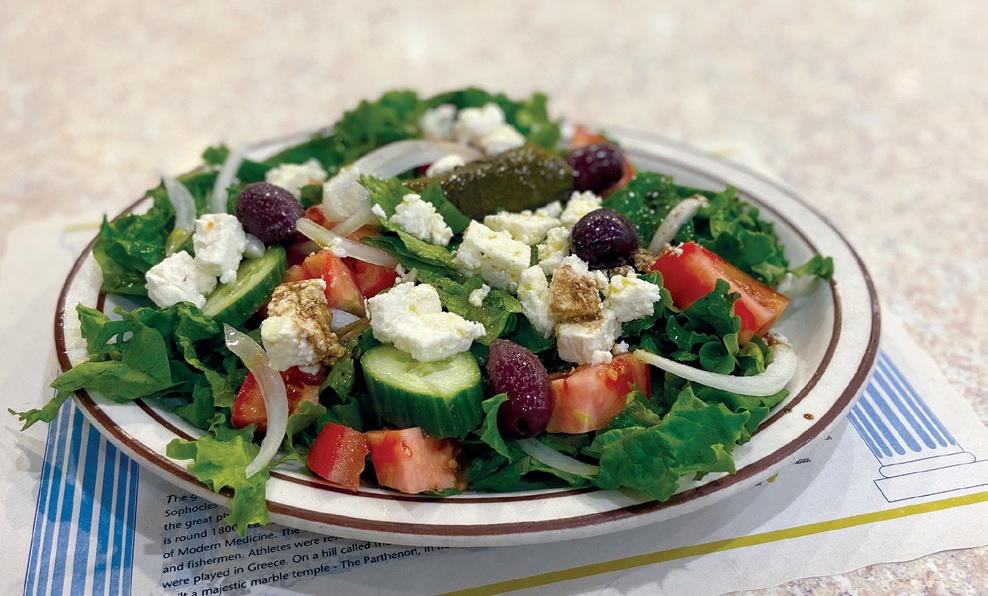
The 42nd Street Diner, with its old Greek charm, is owned by Louis and Raquel Gritsipis. The Gritsipises’ diner is near the new Billionaire’s Row of Hudson Yards, an area that was once down-and-out but now is up-and-in. The building is surrounded by glassy high-rises occupied by transient renters and owners. Hell’s Kitchen used to be a dangerous area where crime was rampant; Louis has been held up seven times. The diner stays open seven days a week, except during his annual trip to his homeland of Kandila, in the Aetolia-Acarnania region of Greece.
The diner serves up the usual suspects such as hamburgers, sandwiches, fresh salads, pasta dishes, and pizza. It also offers some Greek favorites, including Greek salad, dolmades, spinach pie, baklava, and gyro platters. Louis does most of the cooking.
“I was a cook on the Patris,” says Louis. (Curiously, this is the same boat that took my family from Greece to Australia in the 1960s, and I can’t help wonder if we all once enjoyed his cooking, albeit over a span of decades.)
Property developers have had their eyes on this spot for years, he says, but he insists that he won’t sell. “I’ll never retire,” says Louis, who is in his late 70s. “If you retire, you’re dead. This is my palace and my home,” he states proudly, and his wife agrees. They also happen to live upstairs. He did try to retire at one point but quickly became bored. The key to his continued good health, he says, is in the business that keeps him active.
The diner that has been his home for decades, however, is being squeezed by rising expenses, rising taxes and Manhattan’s $15 minimum wage law that cuts into owners’ margins, changing tastes to fast-and-casual trendy cafes, and developers who want to build up. The land and unused development rights above the diner are lucrative and developers can use those rights to build highlevel luxury apartments. On multiple occasions, developers have offered to buy the diner. “This is my house and place for over 55 years, and
money is not everything,” says Louis. In 2013 he accepted an offer of $10 million to sell the building in which his diner sits only to walk away from the deal when the buyer tried to offer him less. No one doubts the attempts to push the Gritsipises out, and they continue to receive offers. But Louis says his 17-year-old son Andreas has his heart set on studying hospitality management, and it looks likely that he will continue his father’s legacy.
What has kept this diner thriving is the family’s hands-on involvement, hard work, and perseverance. Their kindness and warmth radiates the moment you walk through the door. Locals and travelers on their way to the Hudson River feel this and make it a point to pop in for a bite. The food is always top-notch; there is no compromise on ingredients or taste. I recently enjoyed a Greek salad for lunch, and the Greek olive oil on the salad was of better quality than what’s used in most 5-star restaurants I have eaten at in New York City.
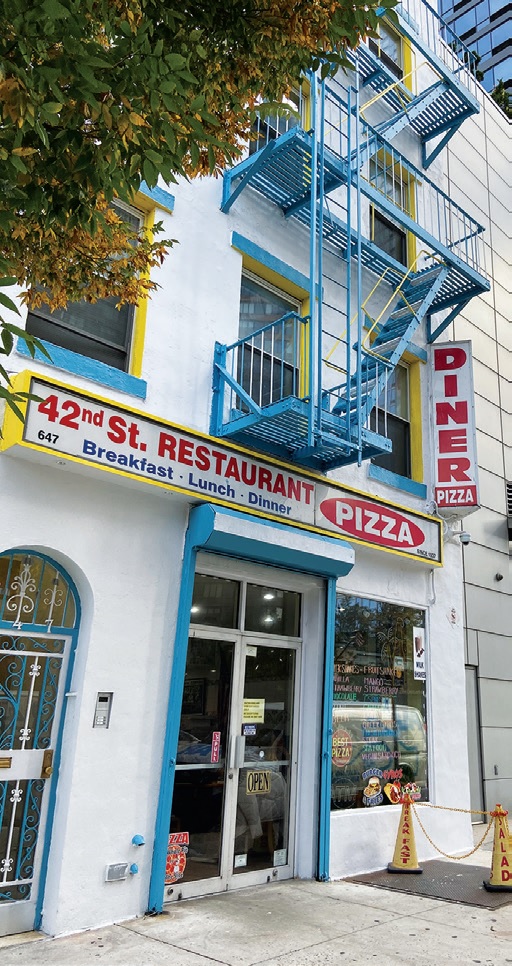
FUN FACTS
Women seldom worked there till after the 1920s. Because the earliest diners catered largely to night-shift workers, they often possessed an atmosphere that deterred women. After WWII, however, when demand for these locales grew, women were encouraged to apply for waitressing jobs. Today, the presence of classically garbed waitstaff is associated with the diner experience.
The ’70s saw a diner renaissance. The 1970s was a decade of broad uncertainty: morals and values were changing in American society, and the country was undergoing a transition. In this transient cultural landscape, people looked to past traditions and institutions for their stability, which led to a demand for the classic appearance. Many places were struggling at that time to compete against the fast-food industry, but suddenly, manufacturers discovered that it was profitable to produce diners that imitated the original design.
Tom’s Restaurant
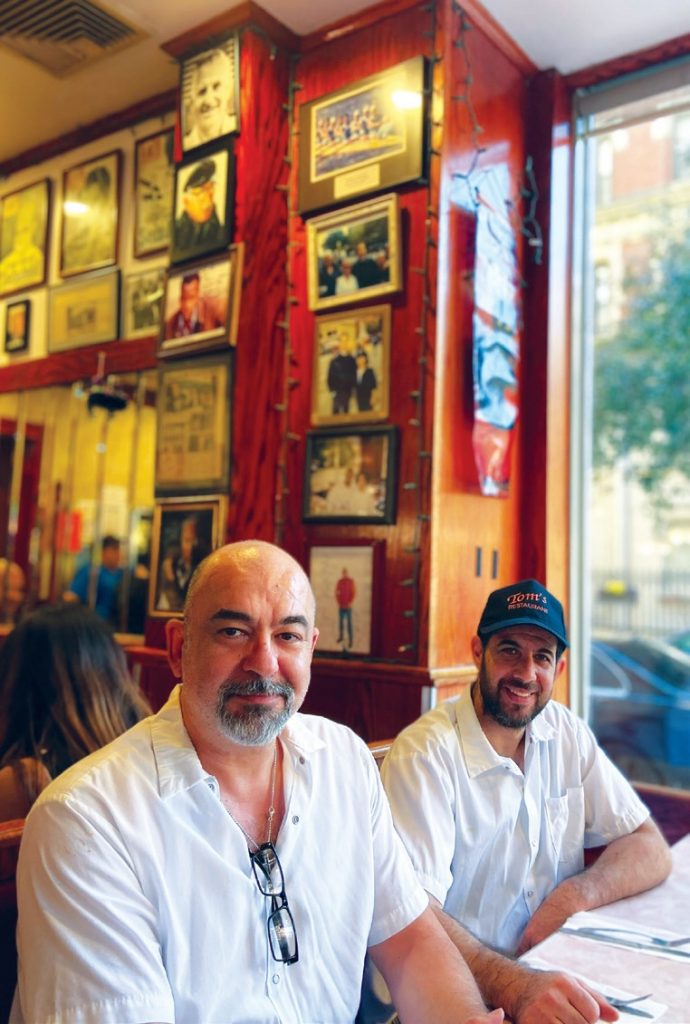
Tom’s Restaurant has been open in different variations as a diner for more than 70 years. It was the inspiration for Suzanne Vega’s song of the same name, and the exterior stood in for Jerry’s regular spot, Monk’s Cafe, in the classic ’90s sitcom Seinfeld. Actor William Hurt is among notable patrons who frequent the place, located within a short walk from Columbia University, whose students and staff form the eatery’s core market.
Tom’s is owned by John Ieromonahos, Kostas Ieromonahos (also the chef), Manolis Nikolakis, and Michael Zoulis. The menu has all the classics, including burgers, salads, sandwiches, steaks, and breakfast offerings. Greek dishes are also offered.
Some barriers the diner has had to overcome are the increase in the minimum wage, offering full service, the changing clientele, and the emergence of new restaurants nearby. They have adapted and strategized to accommodate by offering healthy and plant-based options that include healthy wraps and the plant-based Beyond burger. They also have daily specials that offer their guests dishes you would more likely find in fine-dining establishments. The best-sellers, however, remain classic examples of diner fare: lumberjack pancakes, hamburgers, milk shakes, and freshly made soups.
What makes this diner so successful? We asked Mr. Zoulis. “Cleanliness, the best and consistent service you can provide, and consistently quality food,” was his answer.
The owners must be hands-on and present in the business and should understand all aspects of the business, he stresses. Through the years, Zoulis has performed all jobs in the diner—those both in front of house and back of house, and he is not afraid to step in when someone is unable to turn up to work.
“I respect everyone just like they are my family,” he says, adding that “you earn respect by giving respect, not expecting it. Everyone is unique, so you have to approach and speak to each customer as individuals.”
He is not wrong. While I was enjoying my meal, I was introduced to Bob, a local who has been patronizing the diner for more than 30 years. “The food and hospitality are consistently great in this place,” he says. “I always know what I am going to get and how it’s going to taste.”
Certainly the fame thrust on the eatery by Seinfeld has attracted thousands of tourists over the years (especially from Australia), and this has helped business. Also, they have a new younger clientele (from teenagers to twenty- and thirty-somethings) and, as such, an entire new generation with dietary preferences that challenge the old norms. The menu reflects these changing times. Modest prices, great food, and old-fashioned diner hospitality mean that the place is always packed and, on some days, has a line of patrons waiting to get in.
To some, American diners’ decline was inevitable. Their enigmatic charm has helped them resist fierce competition from fast-food chains, but diner fans and the eateries themselves cannot be complacent. Times, trends, and people change, and diners must adapt and reinvent in order to survive.
As for their future, I remain optimistic that there will always be a need for them. However, yesterday’s diner won’t necessarily be tomorrow’s diner without some adaptation to the market needs and demands.
Whatever the challenges, I am grateful for those diner owners who are beating the odds and keeping the Greek diner alive.
